Torafuku restaurant by Scott & Scott features utilitarian interior designed to get better with age
Canadian architecture studio Scott & Scott used materials that "wear-in with use" for the interior of this pan-Asian restaurant in Vancouver (+ slideshow).
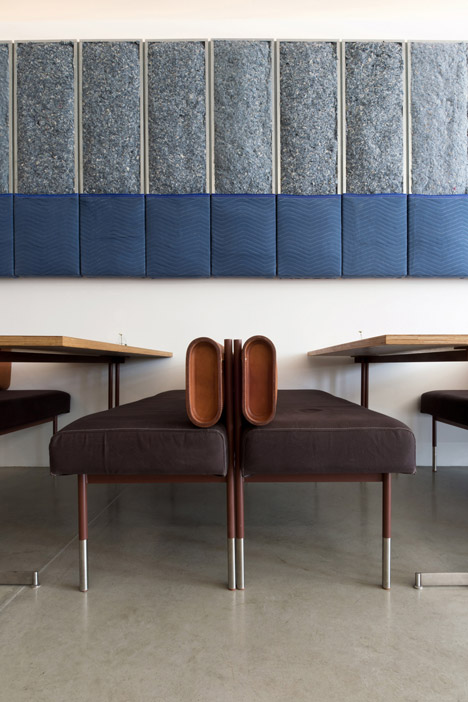
The husband and wife team were tasked with creating a space for the Torafuku Modern Asian Eatery – the first permanent restaurant by the chefs behind the popular Le Tigre food truck, which moves around Vancouver serving a "contemporary interpretation of classical Chinese cuisine".
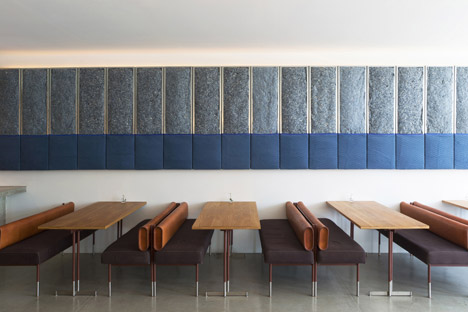
Situated on the ground floor of a building in close proximity to Chinatown, the 48-seat restaurant was designed to reflect the origins of the business. The architects chose utilitarian materials intended to change with age and use – a common theme throughout their work.
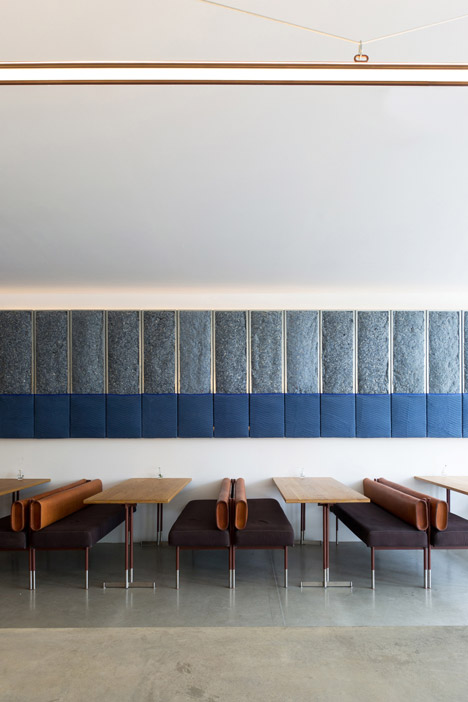
"Our interests in the potential of unsophisticated materials which we encounter in general construction was aligned with the restaurant's beginning," David Scott told Dezeen. "The street-side food truck is where the chefs built their reputation, it was built from preparing fresh high quality dishes as take-away."
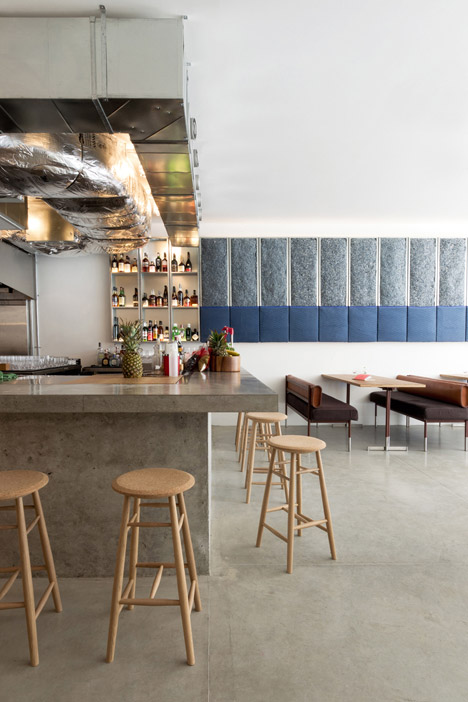
"We chose materials that are used primarily for their utility, left in their raw state or finished in a manner of basic construction standard," he explained. "They balance the strength of utility borne materials with a desire for the public elements to wear-in with use, taking on familiarity and comfort over time."
Aiming to reflect the informal and open nature of the Le Tigre food truck, Torafuku's kitchen is placed directly in the middle of the restaurant – allowing the chefs to be visible to the diners.
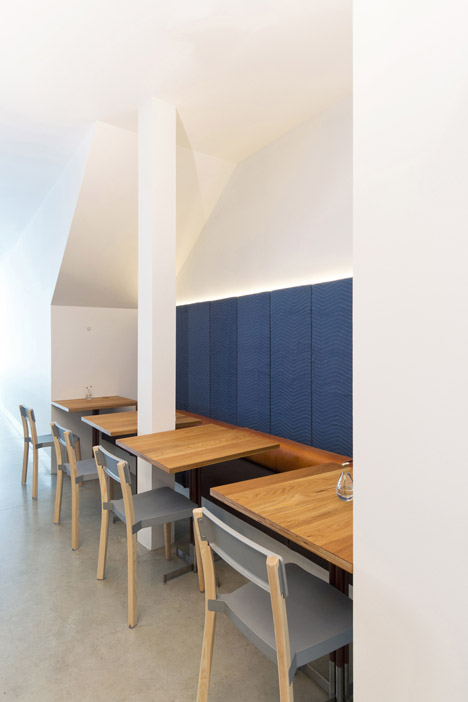
"We often met with the chefs after their lunch service, and there was a desire to have the open kitchen a part of the experience," Scott explained. "The pride of work was something which informed the design and detailing."
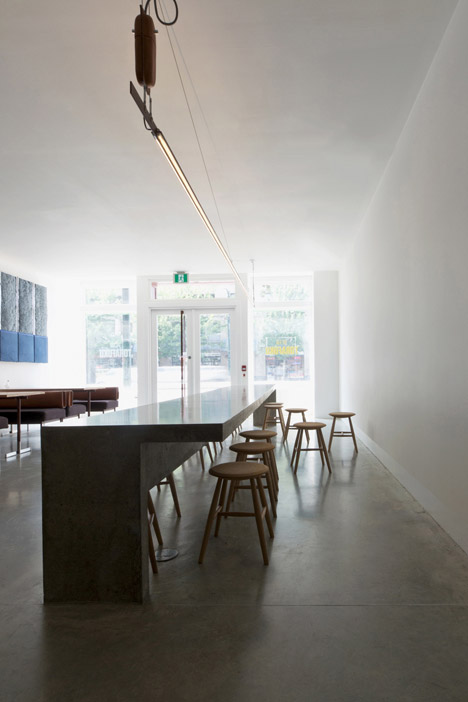
A large cast-concrete table is situated in the front section of the restaurant, whilst four smaller booths sit against the wall on the left side. A further row of two-person tables are set back in an alcove facing the kitchen.
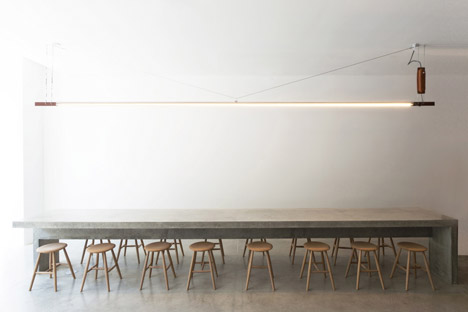
"The concrete communal table and kitchen viewing bar were designed as durable elements around which the space is structured," said the team.
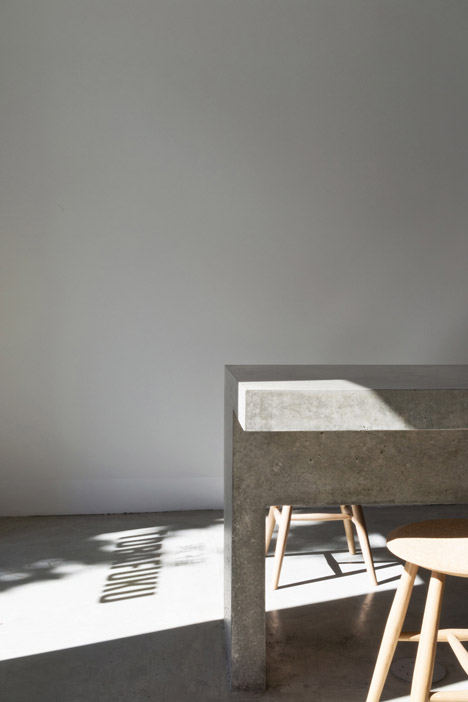
Although most of the furniture was handmade by the architects in their self-designed Vancouver studio, Michael Young's wood and aluminium chairs for Emeco and Lars Beller Fjetland's cork-topped stools for Discipline sit around the designated dining areas.

Quilted pads made from denim and wool have been positioned above the booths to "tune the space's acoustics" and create "greater conversational intimacy".
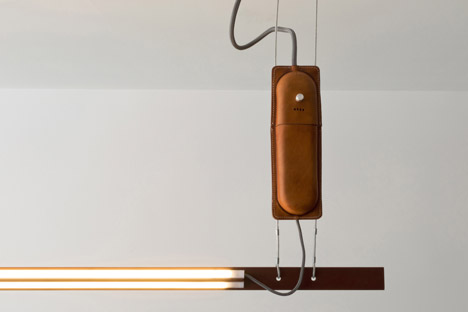
"These panels are situated where smaller groups would be seated at the periphery of the dining space," said Scott. "They compliment the softer leather and tarpaulin seating and contrast with the more lively central communal table."
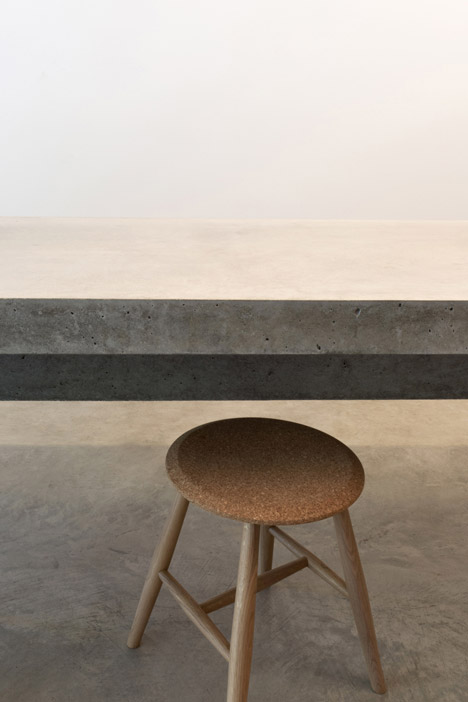
A long strip of LED lights that was custom-made by the architects is suspended above the communal table.
"The light is made from simple steel flats that have been finished in red oxide paint," said Scott. "The LEDs can be balanced independently for up and down lighting."
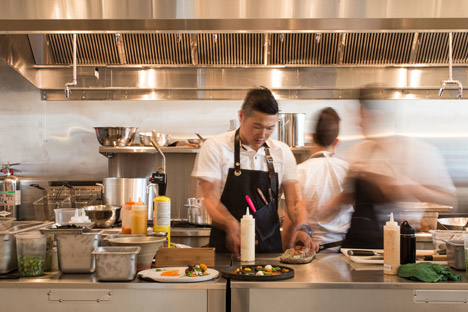
Moulded leather boxes which house the transformers are fixed to either end of the steel bar – the whole pendant is then suspended from an M-shaped cable.

Scott and Scott founded their architectural studio at the start of 2013. Other projects completed by the team since then include a currywurst restaurant featuring peg holes on the walls and a remote snowboarding cabin on Vancouver Island.
Photography is by Scott & Scott, unless otherwise stated.
